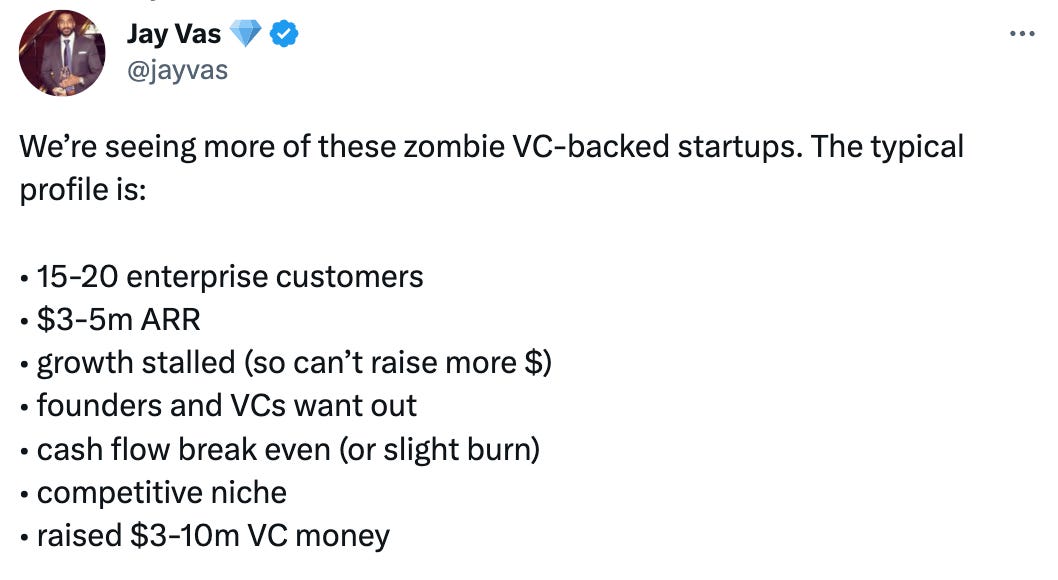Porters 5 Forces
Atlasview Insights -- bite-sized weekly insights that are relevant to all business owners, dealmakers, and investors.
Happy Wednesday folks!
Welcome to Atlasview Insights! We are thrilled to have you join us for another edition packed with valuable content for small business owners, deal makers, and investors alike.
In this newsletter, we cover:
Porters 5 Forces
Atlasview’s Investment Criteria Breakdown
Our Favorite Reads
Insights From Our Team
If you enjoy what you read, please be sure to subscribe and share with your colleagues.
For those who may be unfamiliar with us, Atlasview Equity is a private equity firm specializing in software and tech-enabled businesses. To learn more about our experienced team and investment criteria, visit us here.
Preferred Investment Criteria
We look for the following characteristics in our partner companies:
Industry: Software and tech-enabled businesses
Business Profile: Sticky B2B customer base
Size: Minimum $1m EBITDA or $5m ARR
Geography: The US & Canada preferred
Whether you’re a business owner interested in working with us, or an intermediary with a deal to share, always feel free to reach out and get in touch with us!
Porters 5 Forces
This week, our team wanted to share a framework to assess a business's competitiveness called the Porter's Five Forces Analysis.
If you went to business school, you've seen this before and it might seem cliche...but honestly it's an effective way to quickly (and objectively) assess a business.
In fact, at Atlasview, we incorporate many pieces from Porter's Five Forces in our initial questioning when we receive a deal. We often have to make a decision quickly on whether to pursue or not, and this framework helps us fast-track our understanding of the business and the opportunity.
Here is a quick breakdown of how we approach each of the five forces:
Rivalry Among Existing Competitors
We want to know how powerful the competitors are. Some industries have a winner-take-all dynamic (often the case with horizontal software), and, unless we are looking at the winner, it's best to avoid.
Some Qs we might ask are:
Why isn't a competitor acquiring this business?
How much capital have competitors raised?
How fragmented is the market? Is there an active consolidator?
Threat of New Entrants
We want to know how difficult it is for a new upstart to launch and take market share. Large TAMs inevitably attract new entrants because the end prize is worth the pain of starting up.
Some Qs we might ask are:
Is there interest from venture capitalists in this industry? Have there been newly funded upstarts?
How difficult/long is the sales process? Is distribution typically direct or indirect & gated?
How tailored is the software/service to the niche (if any)?
Bargaining Power of Suppliers
Suppliers for the types of businesses we look at are usually hosting providers and or platforms. Platforms are ecosystems like Salesforce or Microsoft that the software (or service) could be built on top of. We want to know the strength of the partnership, and whether the business is at the complete mercy of the platform.
Some Qs we might ask are:
How much of a cut is the platform taking and when is the last time they increased it?
Could you serve your customers directly, without the platform? Could you partner with other competitive platforms?
Is the platform investing in its partner ecosystem?
Thread of Substitute Products
We want to know what the alternatives are to using the business's software and or service.
Some Qs we might ask are:
Is the product/service a need-to-have or nice-to-have? Is "non-use" an option for its customers?
Would it make sense for customers to build their own tailored version of this software in-house?
Bargaining Power of Buyers
We want a business that has many customers, as the more spread out the revenue is among them, the less power customers have over the business. Some businesses have indirect relationships with their customers via channel partners, so we need to understand what level of risk and influence the channel partner(s) pose.
Some Qs we might ask are:
How much revenue does the top 5 customers represent?
What are the switching costs and risks to customers?
When was the last time you increased your prices? What happened?
You can score each section out of 10 or something to get a (somewhat) objective measure of the opportunity at hand. But even just using this as a general guide will help you streamline your discovery process when presented with a business that you're unfamiliar with.
If you’re an owner interested in working with Atlasview or an intermediary with a deal to share — feel free to reach out and contact us. We will respond within 24 hours, and we can have an offer on the table within 7 days.
We are happy to pay referral fees for any deal referred and successfully closed.
Our Favorite Reads
Atlasview Insights <> Deal Bridge Media
This newsletter was powered by the team at Deal Bridge Media. Deal Bridge builds newsletters for M&A firms to help them generate more inbound deal flow.
Does your investment firm want to start a newsletter? Get in touch with Deal Bridge today!
Insights from our Team
Operations
Investing
Final Thoughts
We have a ton of content lined up for small business owners, deal makers, and investors. Lots of valuable topics including:
Buying businesses
Optimizing cash flow for your business
Preparing your business for an exit
Inner workings of an emerging private equity firm
Scaling customer acquisition
Deal sourcing and structuring
Software and technology investing
If you come across any interesting articles or want us to cover a specific topic in an upcoming newsletter, reply to this thread!








